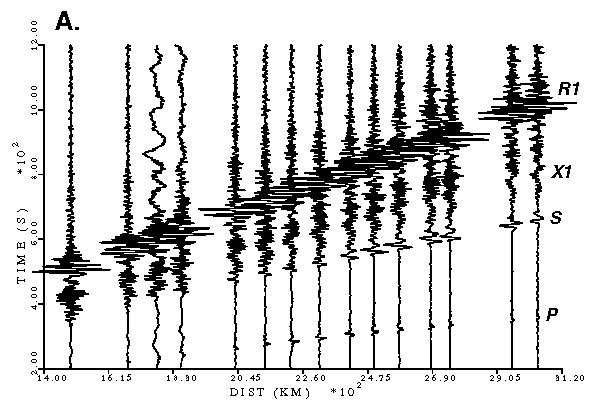

Figure 3: An example of body and surface wave inversion for crust and upper mantle structure using along-strike MOMA data. (a) A profile of the body and surface waves from the MW = 5.7 West Texas earthquake of April 14, 1995, seen on the vertical components. Earthquakes like this and ones in western Mexico and southern California are good for upper mantle studies because they propagate across the MOMA array nearly along-strike and are not too far away from the array, avoiding multi-pathing effects. The velocities of the body waves, as well as the dispersion of the surface waves, can be inverted simultaneously for crust and upper mantle structure. (b+c) An example of this kind of inversion, using an algorithm of Nolet [1990], of the West Texas earthquake recorded at MOMA station MM04 in Le Raysville, PA. The data are shown with a solid line, and the synthetics, generated through modal summation, are designated by a dashed line for the initial model [Iyer and Hitchcock, 1989] (b) and the best-fit model after inversion (c). Note that the inversion not only does a good job of modeling the S wave and Rayleigh wave (R1), which is much earlier than expected before inversion, but also does a remarkable job in matching the Rayleigh overtone phase (X1). (d). The resulting velocity structure for the West Texas-to-MM04 path. There is a high-velocity root to the lithosphere that extends to about 200 km. The crustal thickness is about 38 km, and crustal velocities are faster than those of the standard crustal model of Iyer and Hitchcock [1989].
